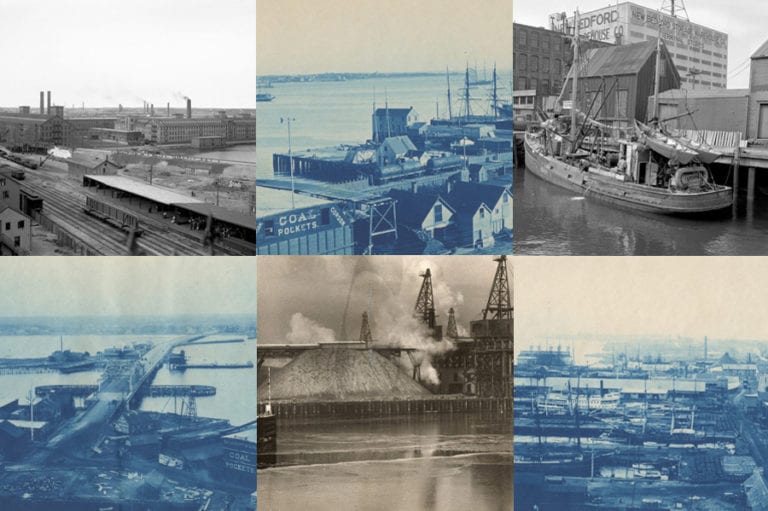Inside Out!: The River and the Rail
Museum Plaza
Opened: September 17, 2020
Closed: September 30, 2020
This exhibition used photography to document how the seaport of New Bedford adapted to new industries in the second half of the 1800s.
The primary means of that change included increased reliance upon the railroad, and increased reliance upon coal as the primary energy source to power growing industrial manufacturing including textile mills and other heavy industry. These industries grew here because the seaport infrastructure like wharves, which dated to the colonial era, and a railroad, which dated from the early 1840s, were pre-existing from the whaling era.
New Bedford’s waterfront changed dramatically over time. By 1890, whale ships were few, and the coal industry transformed the New Bedford waterfront. Large schooners, barges and steamers, carrying coal, cotton and lumber, were replacing whale ships but the reliance upon the sea for transport remained.
The rail as well saw much greater use as the millions of feet of cotton textiles were shipped to market, and the millions of tons of coal, moved through the port.
By 1905, coal pockets became the dominant features of the industrial waterfront. Millions of tons of coal fed textile mills and other manufacturing, as well as New England household heating use in the early 20th century. By the 1960s the mills began to close and the coal pockets disappeared and the railroad also stopped running.
While the train tracks remain, there is no evidence today of the coal industry in New Bedford, while the gigantic mills themselves are either being torn down or re-purposed as the port once again adapts to change.
Curator: Michael P. Dyer, New Bedford Whaling Museum Curator of Maritime History
Virtual Curator Talk
Tuesday, September 22, 2020
with Michael P. Dyer, New Bedford Whaling Museum Curator of Maritime History
View Zoom event HERE


